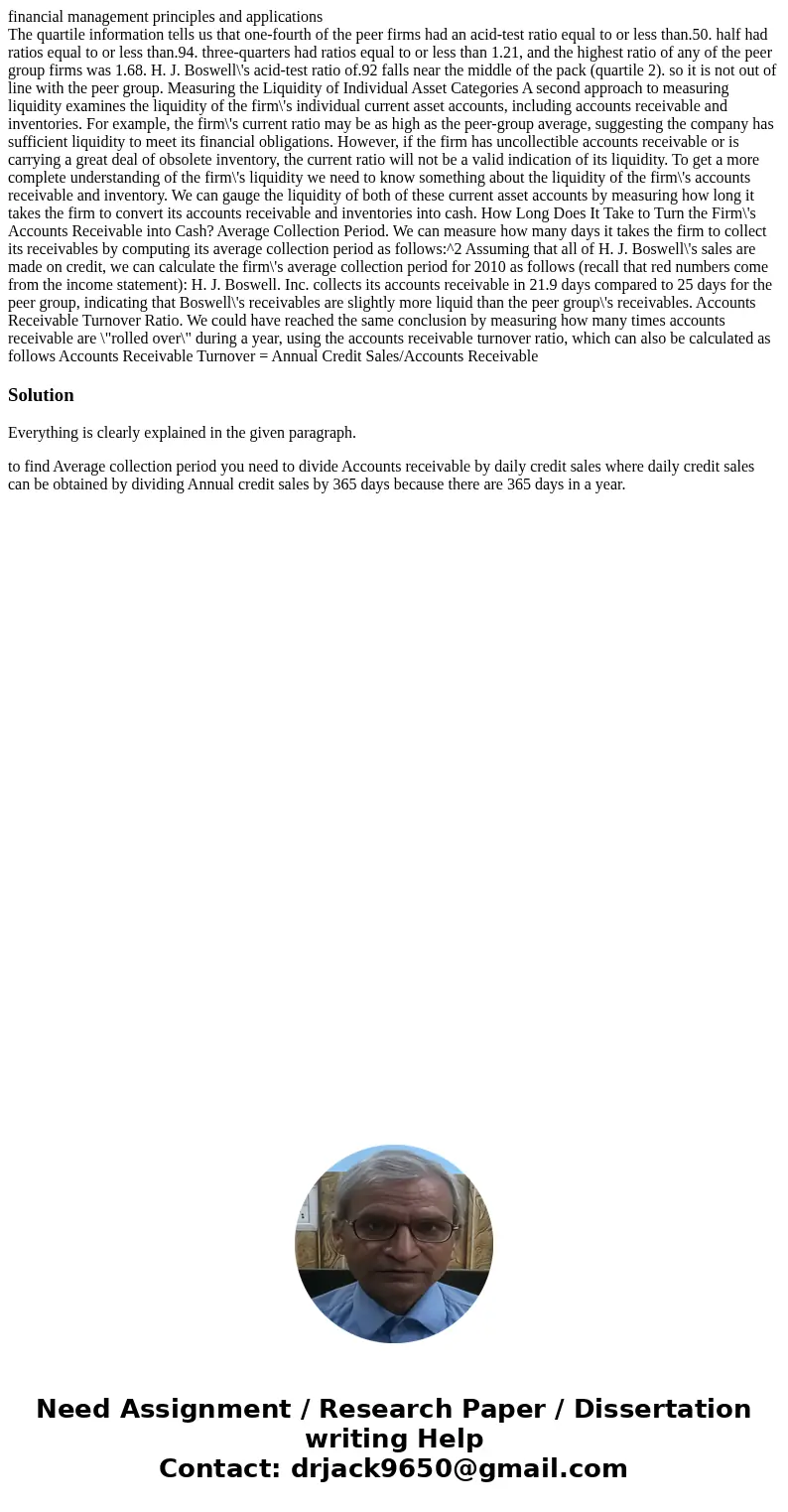financial management principles and applications The quartil
financial management principles and applications
The quartile information tells us that one-fourth of the peer firms had an acid-test ratio equal to or less than.50. half had ratios equal to or less than.94. three-quarters had ratios equal to or less than 1.21, and the highest ratio of any of the peer group firms was 1.68. H. J. Boswell\'s acid-test ratio of.92 falls near the middle of the pack (quartile 2). so it is not out of line with the peer group. Measuring the Liquidity of Individual Asset Categories A second approach to measuring liquidity examines the liquidity of the firm\'s individual current asset accounts, including accounts receivable and inventories. For example, the firm\'s current ratio may be as high as the peer-group average, suggesting the company has sufficient liquidity to meet its financial obligations. However, if the firm has uncollectible accounts receivable or is carrying a great deal of obsolete inventory, the current ratio will not be a valid indication of its liquidity. To get a more complete understanding of the firm\'s liquidity we need to know something about the liquidity of the firm\'s accounts receivable and inventory. We can gauge the liquidity of both of these current asset accounts by measuring how long it takes the firm to convert its accounts receivable and inventories into cash. How Long Does It Take to Turn the Firm\'s Accounts Receivable into Cash? Average Collection Period. We can measure how many days it takes the firm to collect its receivables by computing its average collection period as follows:^2 Assuming that all of H. J. Boswell\'s sales are made on credit, we can calculate the firm\'s average collection period for 2010 as follows (recall that red numbers come from the income statement): H. J. Boswell. Inc. collects its accounts receivable in 21.9 days compared to 25 days for the peer group, indicating that Boswell\'s receivables are slightly more liquid than the peer group\'s receivables. Accounts Receivable Turnover Ratio. We could have reached the same conclusion by measuring how many times accounts receivable are \"rolled over\" during a year, using the accounts receivable turnover ratio, which can also be calculated as follows Accounts Receivable Turnover = Annual Credit Sales/Accounts ReceivableSolution
Everything is clearly explained in the given paragraph.
to find Average collection period you need to divide Accounts receivable by daily credit sales where daily credit sales can be obtained by dividing Annual credit sales by 365 days because there are 365 days in a year.

 Homework Sourse
Homework Sourse